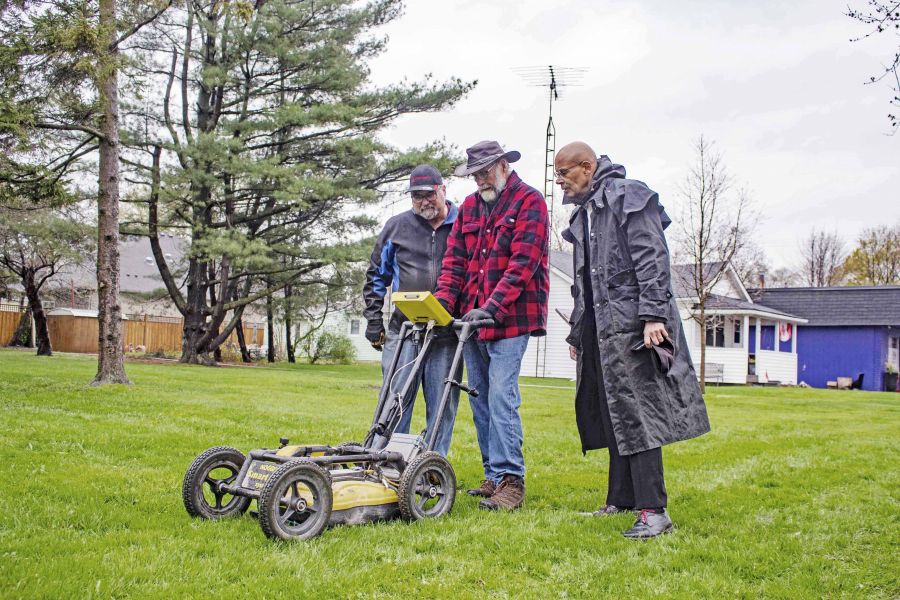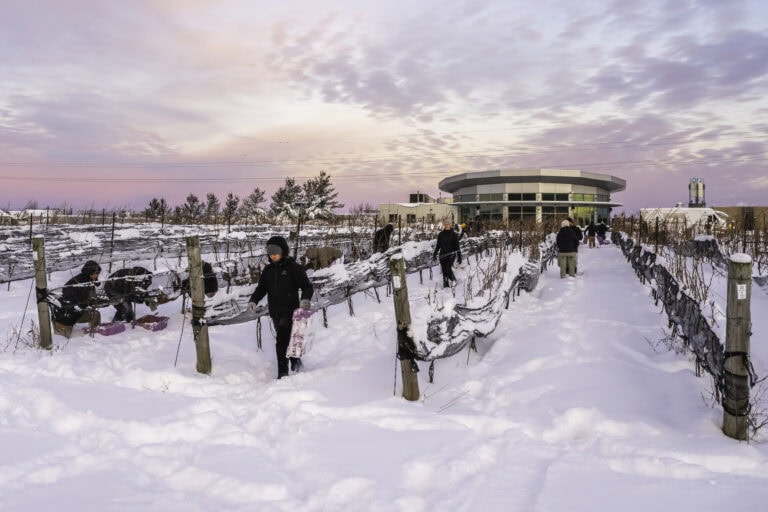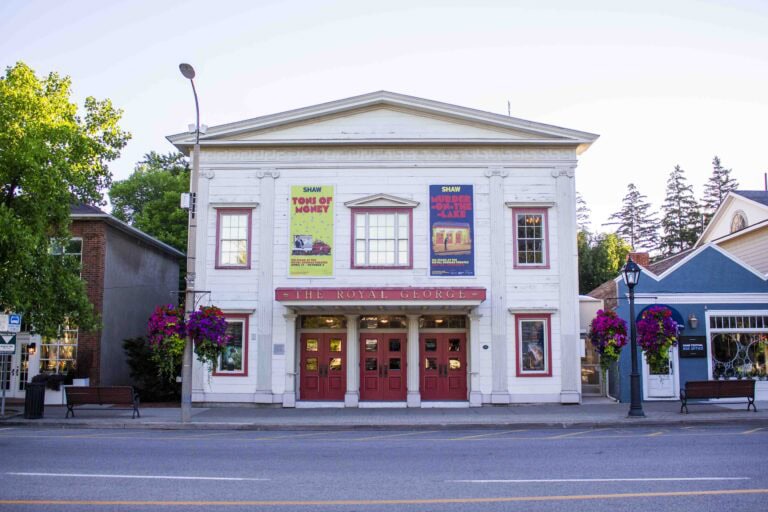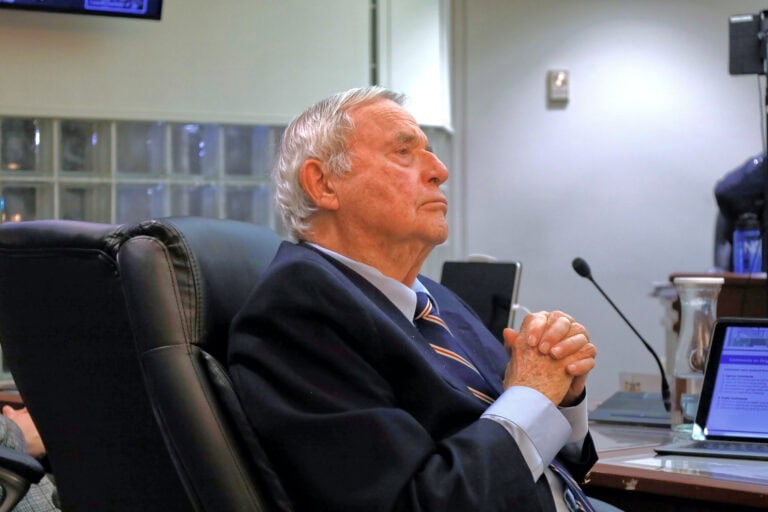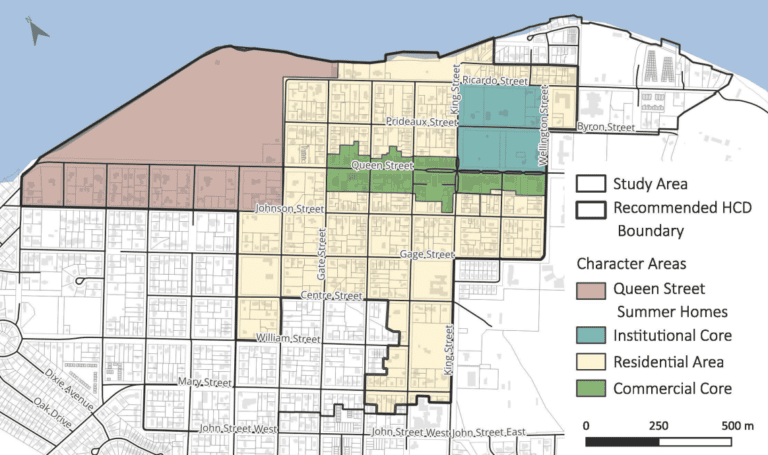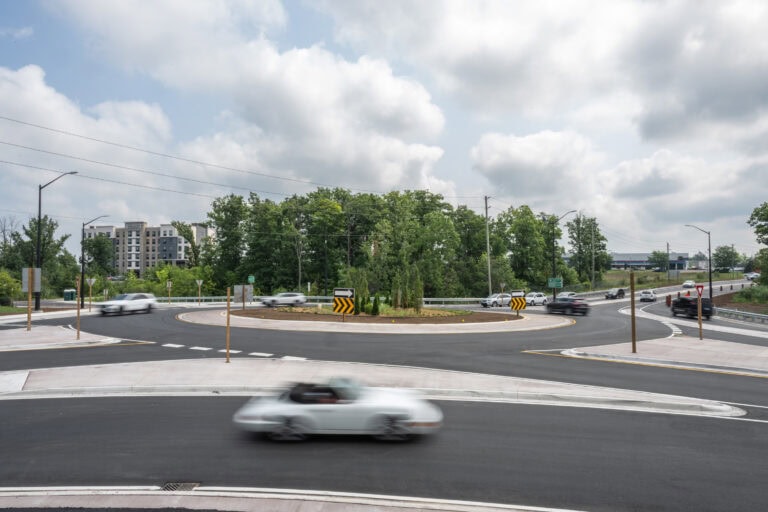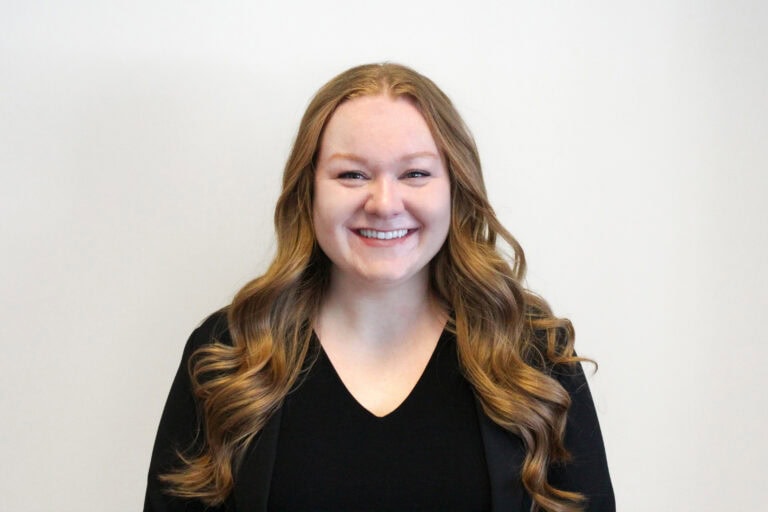Technicians using ground penetrating radar to search historic burial ground
Jim Russell is working to ensure Niagara-on-the-Lake’s historical prominence as an early settlement for free Black Americans and Canadians is no longer a passing thought.
On Wednesday, Russell and a team of technicians gathered at the Mississagua Street site known locally as the Negro Burial Ground to begin the process of locating and identifying the Black Canadians buried in the sacred plot.
“I’m excited this is finally getting done,” Russell told The Lake Report at the burial ground on Wednesday morning as a crowd of journalists and residents gathered around him.
“I’ve been looking at this field for almost 40 years and just last year I said, ‘No one is doing what needs to be done so I really should do it.’ ”
The site is the home of a former Baptist church, which through the 1840s until its closing in 1878 was at the heart of the Black community in Niagara, according to research published by the Ontario Historical Society.
On April 28, the Ontario Heritage Trust announced it will be updating the site's provincial plaque to officially rename the graveyard the Niagara Baptist Church Burial Ground.
Aiding Russell in the search was Steve Watson from Global GPR Services. Watson used ground penetrating radar to comb the entire burial ground and search for anomalies in the soil composition.
The radar does not create a photographic picture of the ground and show where skeletons are, Watson explained. What it does is show the change in soil composition in the layers of the earth.
This means the radar can show where digging had been done in the past.
“When you dig in (soil), you mix it and once you’ve mixed it you can never put it back to its native state,” he said.
“We see the boundary of that grave area and that’s how we know where a grave has been dug in the past.”
Ground penetrating radar is the same technology that has been used extensively across Canada in the past year to locate the suspected graves of missing Indigenous children on residential school properties.
By the end of the day, 13 definitive anomalies were located by Watson and his fellow technician Don Johnston. Many more areas were located but it will require Watson analyzing the data to better understand what they might be.
Russell put Canadian flags in the ground to mark the spots where the potential graves were found.
For Russell, a former news photographer for the Toronto Star and now founder, writer and producer for MANKS Motion Picture Studios, the project isn’t only about respecting the dead but also providing a connection to the living.
“There are people buried here who have great grandchildren and great-great-grandchildren. I’m sure they would like to know where their relatives are buried,” he said.
He knows well that refabricating the mosaic of history can be a difficult process.
“History, by its nature, is very splotchy. But especially Black history and the history of Americans who came here to escape slavery. It’s very sketchy,” he said.
“What we’re basically doing is connecting some of the dots and I’m very excited about that. I think the future generations of Canadians will appreciate the work that we’ve done here. At least, I hope so.”
Russell is embarking on an extensive project to locate the lost graves, obtain documents to discover who the individuals are and to be able to accurately plot out exactly who is in what grave.
He expects a year or two of research to commence once initial work was finished on Wednesday.
“After this, I make a beeline to the Baptist archives, which is at McMaster University in Hamilton,” he said.
The university’s archives have been closed for the past two years due to the pandemic, Russell said.
“But I’m hoping I can get them to open up the actual archives so that we can get in there and start checking the records. Somewhere there has to be a record of who's buried here.”
As important to finishing the project as gathering the names of those buried is finding the church plot, which shows where they were buried.
Russell is expecting his research will take him through the provincial, cityl and church archives, and municipal records to find the information he needs.
Once all of the details are organized, he plans to move on to the next stage of the work: creating historical headstones to mark the individual graves of everyone buried in the cemetery.
And not only will the headstones reflect the accurate historical information of who is who, but they will be created using historic Queenston Quarry limestone, the same stone used for the two headstones that are still standing.
The limestone comes courtesy of Frank Racioppo, president of the Queenston Quarry.
“It’s special. It really is pretty extraordinary to just see the building blocks of Upper Canada just come into fruition,” Racioppo said at the burial ground on Wednesday morning.
Racioppo has a specific store of Queenston limestone that is on reserve purely for historical projects such as what Russell is doing.
“It’s quite satisfying to be able to carry on with any sort of restoration project. It’s important to us and it’s a good feeling to be able to contribute.”
Lord Mayor Betty Disero has spent a lot of time considering the burial ground, as her mother lives nearby.
“Her and her neighbours have always wondered and worried about what’s been in here and they’re worried about a lack of recognition for the bodies that are buried in here,” Disero said at the site.
“I’m hopeful that they will be able to find out who the bodies are and give them the recognition they deserve.”
Disero said NOTL’s place in history as a beacon of freedom and a stepping stone for the abolition of slavery is one of her greatest prides in living in and representing the town.
“When I meet American tourists or visitors in Niagara-on-the-Lake they are thankful to us for starting that, everybody, down that path. I get goosebumps talking about it,” she said.
“The things that happened in Niagara-on-the-Lake may not be thousands of years old and may only be 200 years old, but they were significant to the way the world is evolving. To me, that is beyond privilege to live here.”
She said these important acts of recognition build into a better world.
“Every step we take as a community just makes Niagara-on-the-Lake and Canada and the world a better place,” she said.
Russell hopes to hold a design competition when the time is right to attract Niagara Region artists to design the headstones for the burial ground.
One thing that is off the table is any form of excavation.
“It would take an act of Parliament to dig here,” Russell said with a laugh.
And digging is not wanted, as the ground is a sacred and sensitive part of Canadian history, he said. The remains would also provide little to no help in identifying the individuals.
But there is one avenue for archeological work that sprung up as Watson began taking preliminary scans of the grounds.
He found several anomalies that were small in diameter. He believes those to be headstones that have sunken into the ground over time, he said.
Russell said if original headstones are indeed located he would be willing to go through all the red tape to organize a historically valuable archeological dig on the site and to retrieve them.
Not only would it be an incredible piece of Canadian history to uncover, it could be invaluable for determining who is buried where, he said.
But respect for the site and those who called Niagara home 200 years ago comes first.
The project was in doubt last week after Russell hit several roadblocks in the form of town permits for the project. He reached out to The Lake Report for help in navigating the municipal regulations surrounding the work.
After emails from The Lake Report, Russell and the town were able to resolve their outstanding issues and move ahead with the project.
“Evan (Saunders) is the reason this is happening,” he told those gathered at the burial ground on Wednesday morning.
“He sent emails, he called the prime minister and even the King of England to get this going,” Russell joked.



